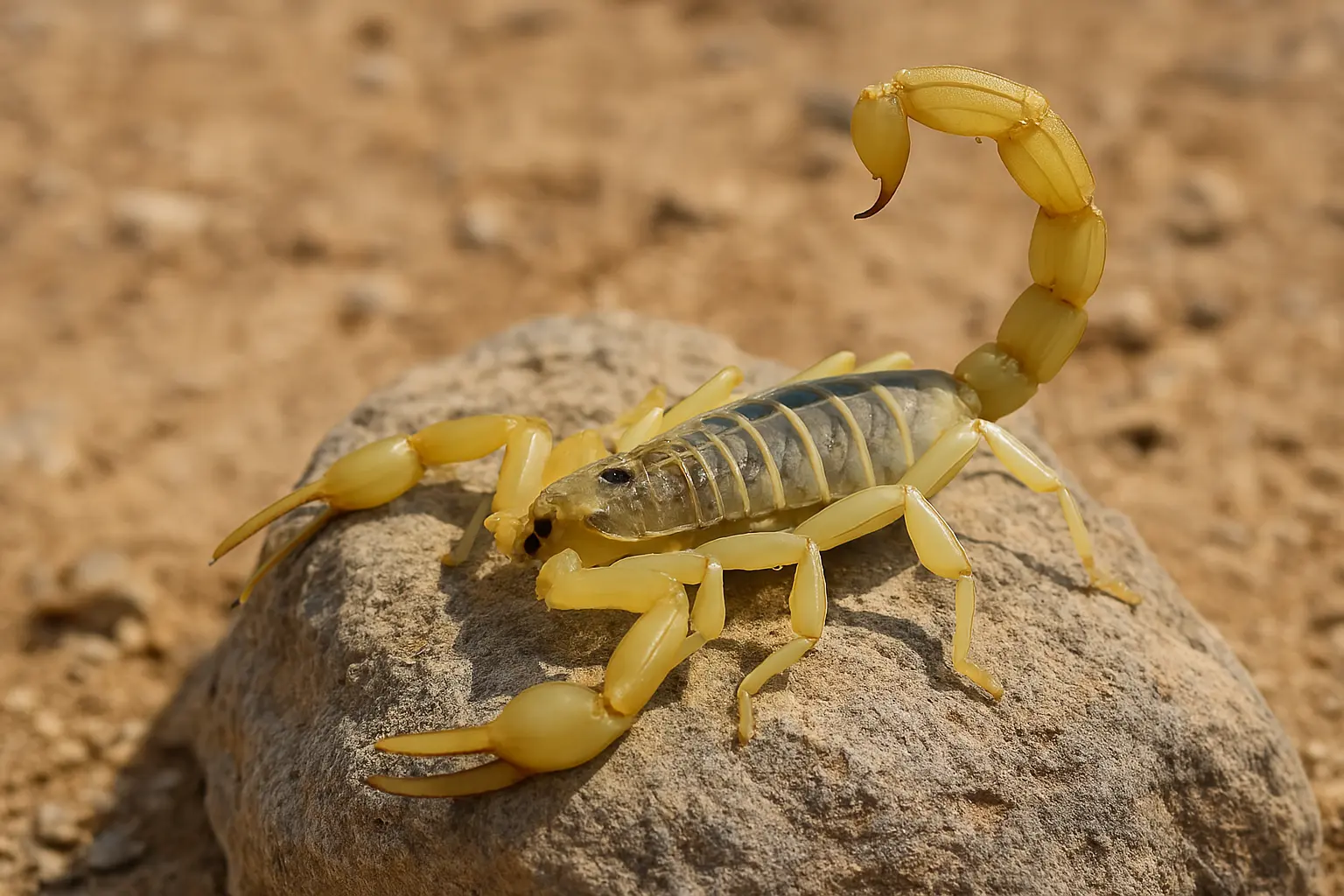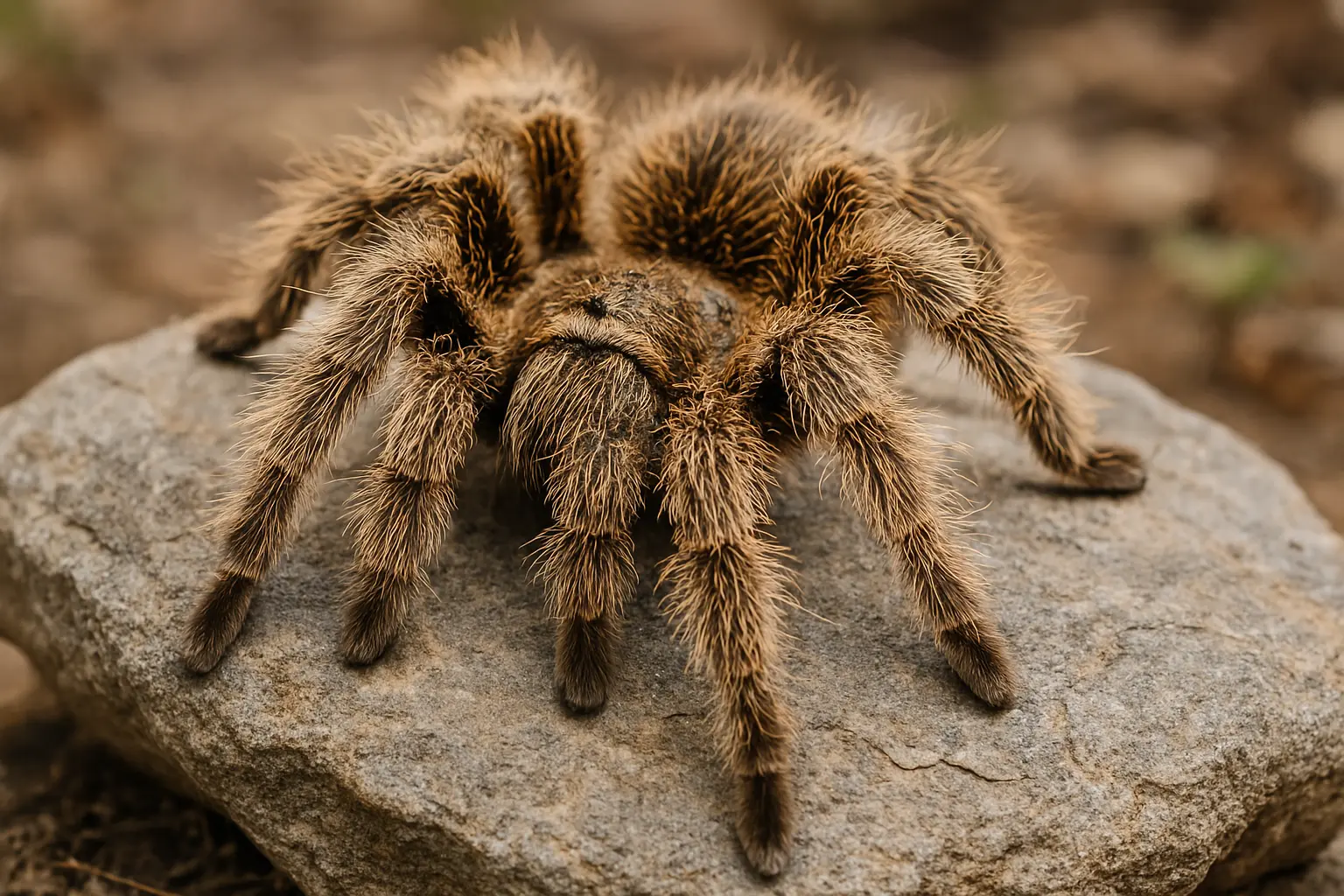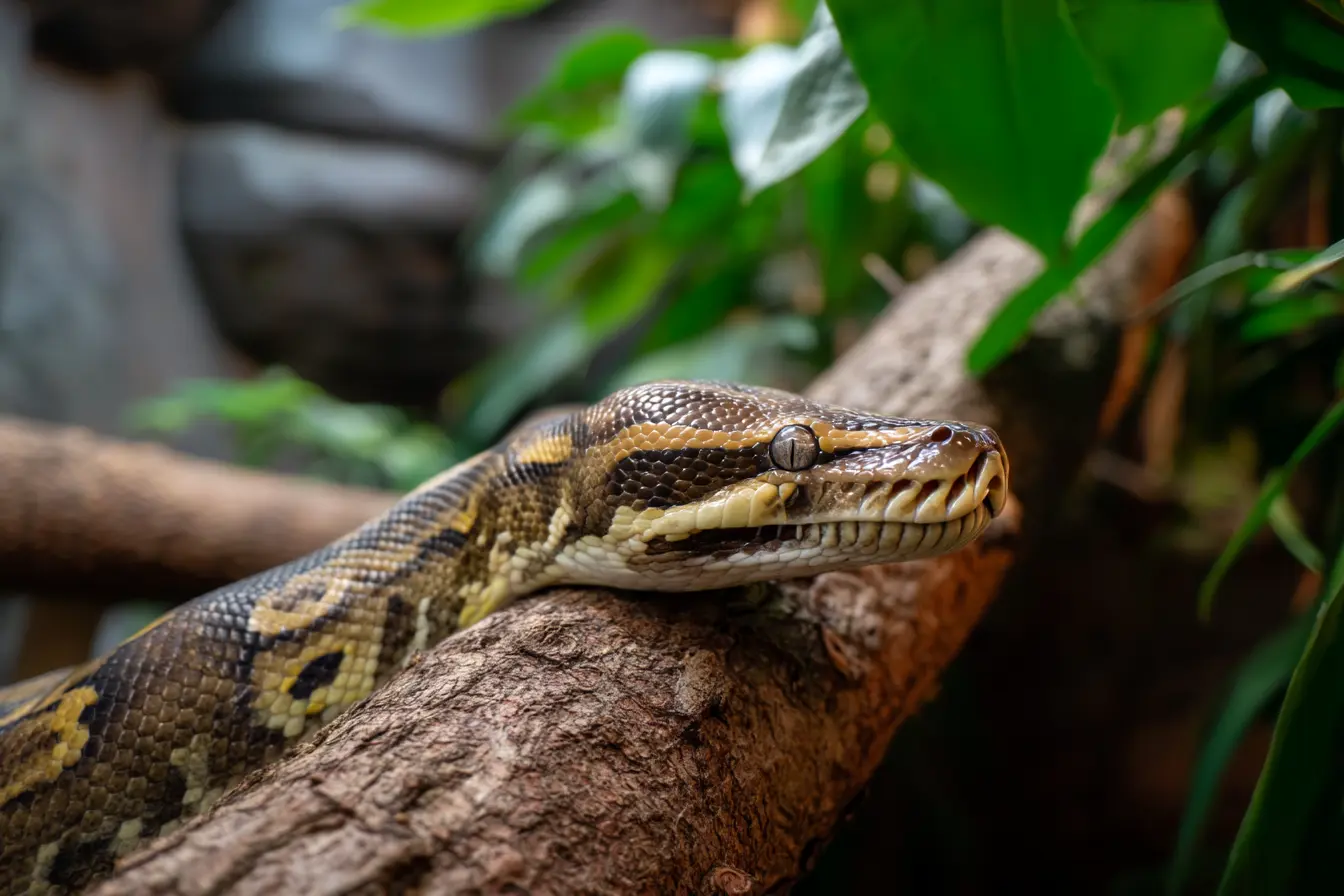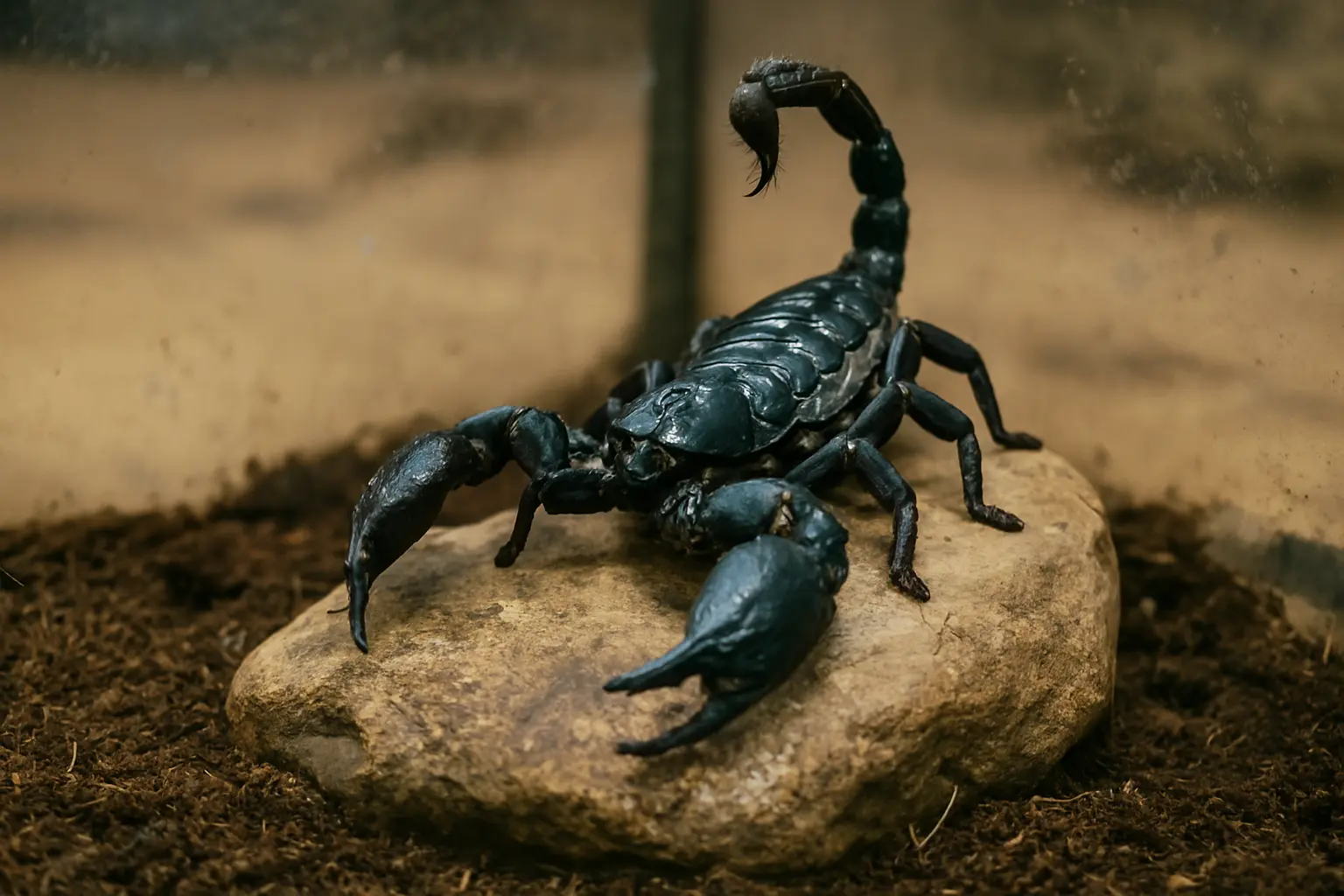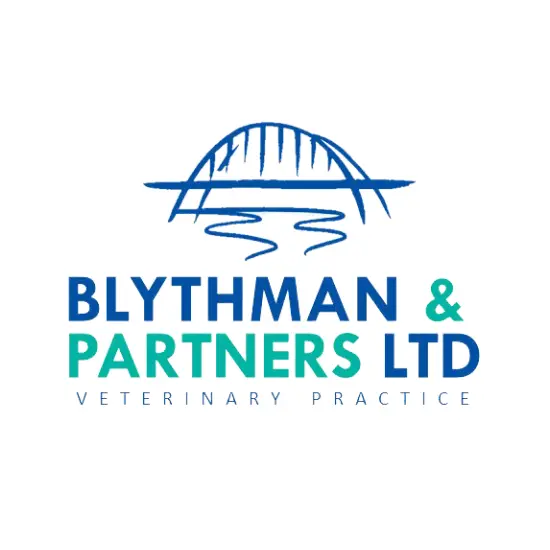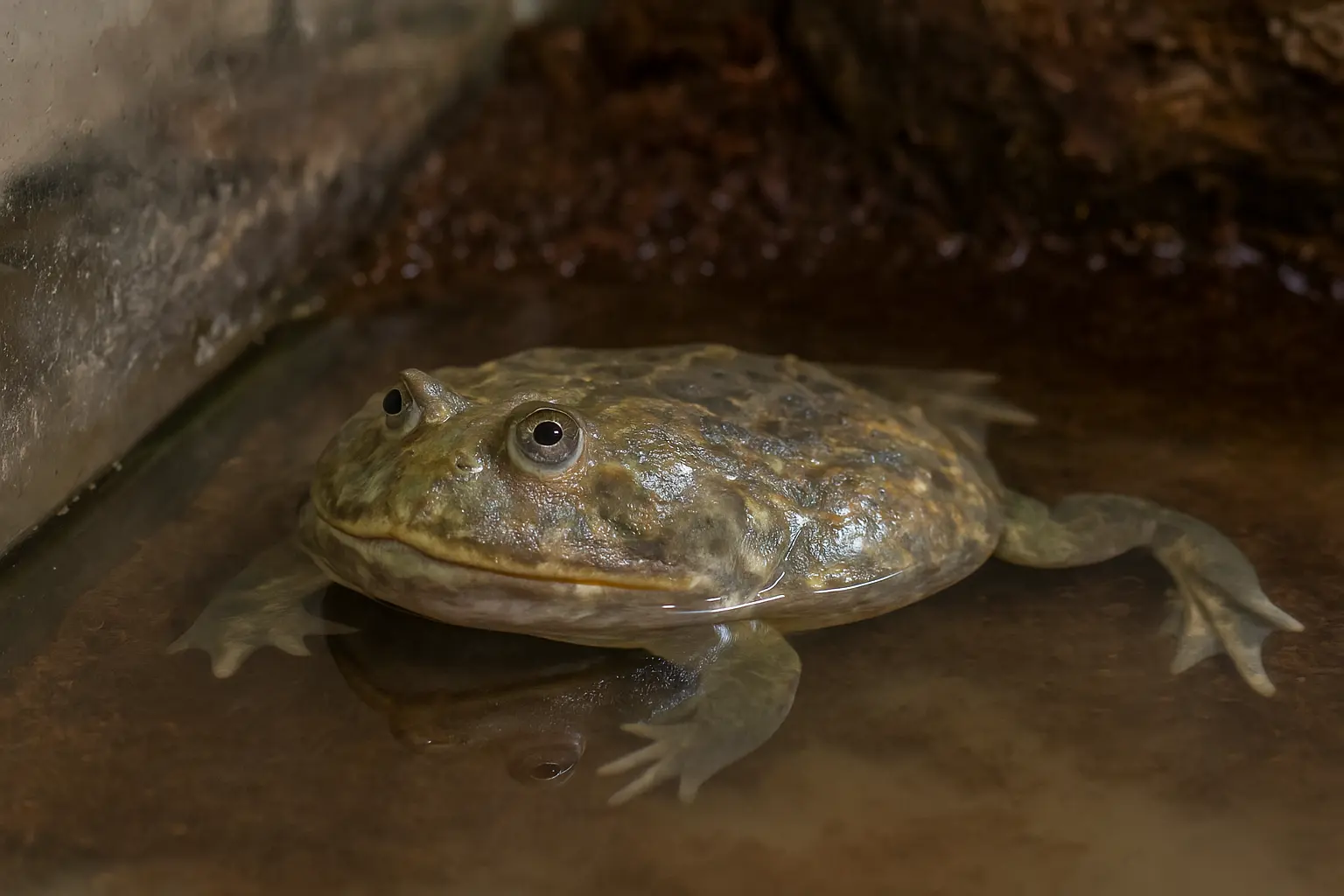
Keeping Budgett’s Frog: A Comprehensive Guide
Budgett’s frog (Lepidobatrachus laevis), also known as the Paraguay horned frog or hippo frog, is a unique and fascinating amphibian species. Known for its wide, flattened head, aggressive feeding habits, and comical appearance, this semi-aquatic frog is a great choice for experienced keepers looking for an interesting pet. However, Budgett’s frogs require specific care, including a proper aquatic setup, a varied diet, and careful handling due to their defensive nature.
This guide covers everything you need to know about keeping a Budgett’s frog in captivity.
Physical Characteristics
Size
- Juvenile Budgett’s frogs start out at around 2.5 cm (1 inch) in length.
- Adults grow to 10 to 13 cm (4 to 5 inches), with females generally being larger than males.
Lifespan
With proper care, Budgett’s frogs can live 15 to 20 years, making them a long-term commitment.
Colouration and Skin Texture
- These frogs have a flattened, wide body with a large head that makes up about half of their total size.
- Their colouration is usually greyish-green to brown, with mottled patterns that help them blend into muddy water.
- Their smooth, slightly slimy skin helps them stay hydrated.
Differences Between Males and Females
- Females are usually larger and bulkier than males.
- Males have a distinct, loud vocalisation used during breeding.
- Males often have darker throats during the breeding season.
Legal Considerations and Ethics
Before acquiring a Budgett’s frog, check local laws regarding amphibian ownership. These frogs should be purchased from reputable breeders, as wild-caught specimens can suffer from stress and parasites.
Although they may look amusing, Budgett’s frogs can be aggressive and should not be treated as interactive pets. They are best kept as display animals.
Housing and Enclosure Setup
Budgett’s frogs require a semi-aquatic environment with enough space to accommodate their burrowing and swimming habits.
Tank Size and Setup
- A minimum tank size of 75 litres (20 gallons) is recommended for one adult frog.
- A larger enclosure of 110 litres (30 gallons) or more is ideal, especially if keeping multiple frogs.
- A secure lid is necessary to prevent escape.
Water Depth and Land Area
- Budgett’s frogs spend most of their time in the water but also need a shallow land area.
- Water depth should be 5 to 15 cm (2 to 6 inches), allowing them to rest at the bottom while keeping their heads above water.
- Provide a sloped or partially submerged surface such as driftwood or a flat rock for easy land access.
Substrate
- A bare-bottom tank is easiest to clean and prevents accidental ingestion of substrate.
- If using substrate, fine sand is safer than gravel, as Budgett’s frogs may accidentally swallow small particles.
- Avoid using large gravel or sharp materials that could harm their sensitive skin.
Filtration and Water Quality
- A low-flow, sponge, or canister filter helps maintain clean water without creating strong currents.
- Perform partial water changes of 25 to 50 percent weekly.
- Use dechlorinated water, as tap water contains chemicals harmful to amphibians.
Temperature and Humidity
- The ideal water temperature is between 24 and 27°C (75 to 80°F).
- The air temperature should remain between 22 and 26°C (72 to 78°F).
- A submersible aquarium heater may be required if room temperatures drop too low.
- Humidity should be around 60 to 80 percent, maintained by keeping the water clean and misting occasionally.
Lighting
- Budgett’s frogs do not require UVB lighting, but a low-output UVB bulb may be beneficial.
- A regular day-night cycle using ambient light or an aquarium LED is recommended.
Diet and Feeding
Budgett’s frogs are carnivores with a strong feeding response. They will eat almost anything that moves, so their diet must be carefully managed to prevent obesity and nutritional deficiencies.
Suitable Food Items
- Earthworms
- Crickets
- Dubia roaches
- Silkworms
- Small fish (occasional treat)
- Pinky mice (very rarely, as too much can cause obesity)
Feeding Schedule and Portion Sizes
- Juveniles should be fed daily with two to four small food items per feeding.
- Adults should be fed every two to three days with two to three larger food items per feeding.
- Avoid overfeeding, as these frogs are prone to obesity.
- Use feeding tongs to prevent accidental bites.
Supplements
- Dust food with a calcium supplement once a week.
- Provide a multivitamin supplement every two weeks.
Handling and Behaviour
Budgett’s frogs have a bold personality and are not ideal for handling. They may bite if they feel threatened and can produce a loud scream when disturbed.
Common Behaviours
- They spend much of their time sitting motionless in the water, waiting to ambush prey.
- They may puff up and lunge if they feel threatened.
- They have a strong grip and can latch onto fingers if they mistake them for food.
Health and Common Issues
These frogs are hardy but can suffer from health issues if their environment is not properly maintained.
Common Health Issues
- Bloating – May indicate bacterial infections, improper diet, or poor water quality.
- Skin infections – Fungal or bacterial infections can occur due to dirty water or injuries.
- Obesity – Overfeeding and a lack of activity can lead to excessive weight gain.
- Impaction – Ingesting substrate or large, indigestible food items can cause digestive blockages.
Preventative Care
- Maintain clean water with regular changes.
- Feed a varied diet in appropriate portions.
- Avoid handling unless absolutely necessary.
Brumation and Seasonal Changes
Budgett’s frogs naturally go through a period of dormancy in response to seasonal changes. In captivity, brumation is not necessary unless attempting to breed them.
- If temperatures drop, they may burrow into the substrate and enter a state of dormancy.
- Brumation should only be induced intentionally by experienced keepers following gradual cooling procedures.
Breeding Budgett’s Frogs
Breeding Budgett’s frogs in captivity is challenging and requires precise environmental changes.
Triggers for Breeding
- Gradually lower the water temperature and reduce feeding to mimic the dry season.
- Reintroduce warmer temperatures and increase misting to simulate the rainy season.
Egg Laying and Tadpoles
- Females lay up to 1,000 eggs in shallow water.
- Eggs hatch in two to three days, and tadpoles metamorphose into froglets within six to eight weeks.
- Tadpoles are highly carnivorous and will eat each other if not well-fed or separated.
Conclusion
Budgett’s frogs are unique, hardy, and entertaining amphibians, but they require specific care to thrive. Providing a properly maintained semi-aquatic setup, ensuring clean water, and feeding an appropriate diet are essential for their health.
While they may not be ideal for handling, their strong feeding response and amusing behaviours make them fascinating display animals. For experienced amphibian keepers willing to accommodate their special needs, Budgett’s frogs can be a rewarding and long-lived pet.
Vets near you
Speciality vets
- Aquatics vet specialists
- Birds vet specialists
- Camelids vet specialists
- Cats vet specialists
- Cattle vet specialists
- Deer vet specialists
- Dogs vet specialists
- Equines vet specialists
- Exotic vet specialists
- Goats vet specialists
- Pigs vet specialists
- Poultry vet specialists
- Sheep vet specialists
- Small Mammals vet specialists
- Wild vet specialists
